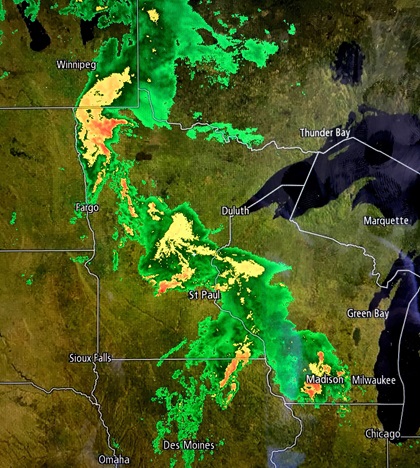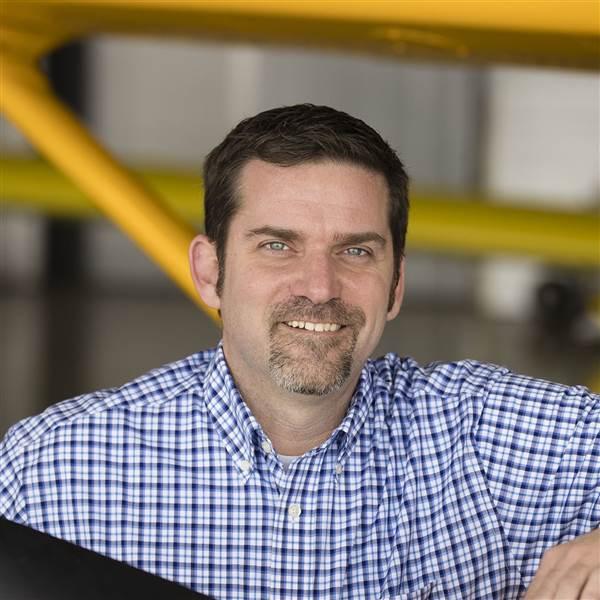VFR Unleashed: Let’s talk about getting stuck
Part Six of a multi-part series on expanding our horizons as VFR-only pilots
You don’t need an instrument rating to explore countless adventures and nationwide destinations. With healthy decision-making skills and some flexibility in your schedule, opportunities abound.
One year while flying to EAA AirVenture in Oshkosh, Wisconsin, the decision to stop overnight resulted in getting trapped by weather for multiple days. It was not an easy decision, and one that I second-guessed for many hours. It has often helped me to reflect on the complex decision making we face as VFR pilots, which includes the potential to get stuck somewhere we don’t want to be.
I had hoped to make it all the way from Maryland to Wisconsin on the Friday before the big event. It was imperative for me to be there no later than Sunday, as I was flying AOPA’s display aircraft that needed to be on our campus prior to Monday morning’s grand opening. I purposely built two extra days into my travel plans to allow for the flexibility I know long-range VFR flying requires.
As the weather would have it, I got a late start on Friday waiting for morning mist to burn off. By the time I got moving, the long trek across the Midwest had me well into early evening before I crossed Indiana and prepared to turn north. Here is where the decision making became difficult.
I had just under two hours of flight time left, and not much more than that until the airfield at Oshkosh would close for the night. There wasn’t any margin to stop for dinner or rest.

The larger issue was twofold. First, I recognized significant fatigue setting in after hand-flying for six hours with no autopilot and no co-pilot. I could tell my concentration was fading; I was hungry, tired, hot, and getting sleepy. Two more hours began to feel daunting, and I recalled sage advice from my former boss that caffeine is no substitute for genuine rest. But secondly, and far more concerning, I could see on my EFB a massive storm system steadily moving across the Dakotas that was literally 600 miles long.
If I called it quits and stopped for the night, there was a solid chance I’d be trapped by that weather before I could get started the next morning. Did I mention it was 600 miles long? There would be no wiggling around it once it arrived across my route.
In long-range VFR flying, we often face a confluence of multiple safety decisions. “Get-there-itis” comes from many sources: our own goal orientation, a family commitment, an event we don’t want to miss, or a business objective. When we weigh those pressures against factors like impending weather, growing fatigue, or even the risks of flying at night, we must be prepared to accept that stopping short of our destination may be the wisest decision, even when it means we will be stuck somewhere we really don’t want to be.
To help prepare ourselves for the flexibility to stay put for a while, there are a few things we can do:
- Build margin into your plans. Anticipate your trip will take much longer than you think. Be sure your commitments can be adjusted so you are not pressured to keep them in the face of unsafe circumstances.
- Pick carefully the place you want to get stuck. Look up options along your route in advance of your trip. Know where the good hotels, nice restaurants, and interesting recreational opportunities are so that the choice to stop short has a little positive inducement. It’s a lot easier to stomach getting stuck when the place you choose looks like it could be fun.
- Bring a good book. Or a TV series you’ve always wanted to watch. Enjoyable options will help keep you sane.
Always remember that the hardships of being stuck somewhere are far outweighed by the alternatives. Boredom and frustration, or even missing that vital commitment you made, are far better than someone having to call your family with terrible news.
As I cruised above northern Indiana under a cloudless and cooling summer evening, I concluded that pushing through fatigue was simply too serious a risk. I could tell my concentration was well below par for the demands of piloting. So, I called it quits. But I did so with some wisdom. I knew of a town southwest of Chicago where there were some recreational activities I was curious to explore. I found the closest airport, confirmed on my EFB that FBO services, hotel accommodations, and a rental car would support a nice visit, and I landed.
I will tell you in our next installment of VFR Unleashed how it worked out the next two mornings. The decisions became even more complicated.
Perhaps it is a bit melodramatic to suggest that my decision to stop short that night is why I am here to tell you the rest of the story. That’s the funny thing about making conservatively safe decisions. We just don’t know how it would have worked out if we took the greater risk. But one thing we can be certain of: When we choose to do the safest thing and get ourselves on the ground, we are indeed unquestionably safe.





